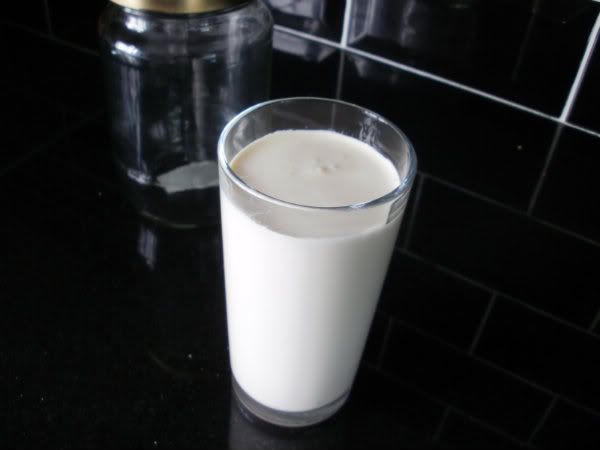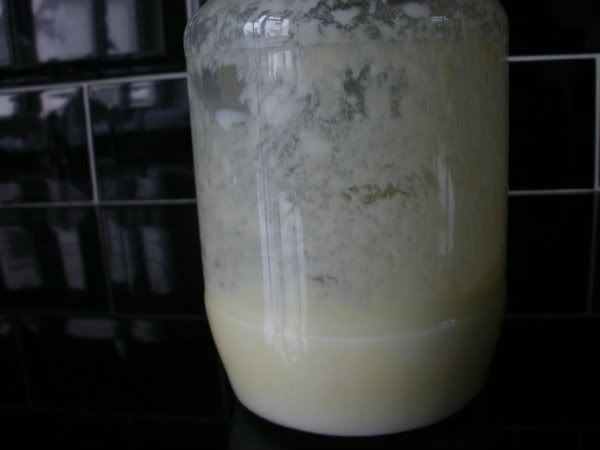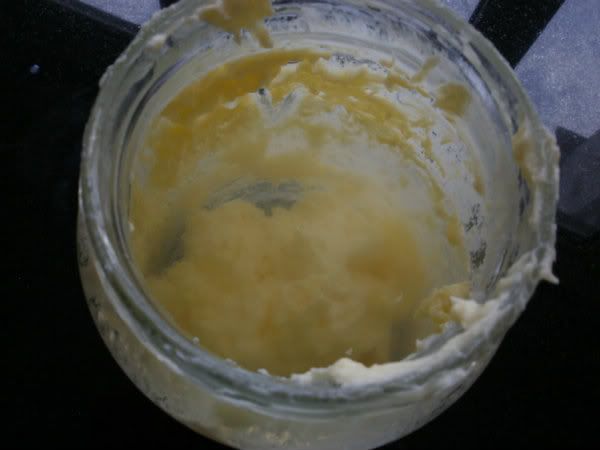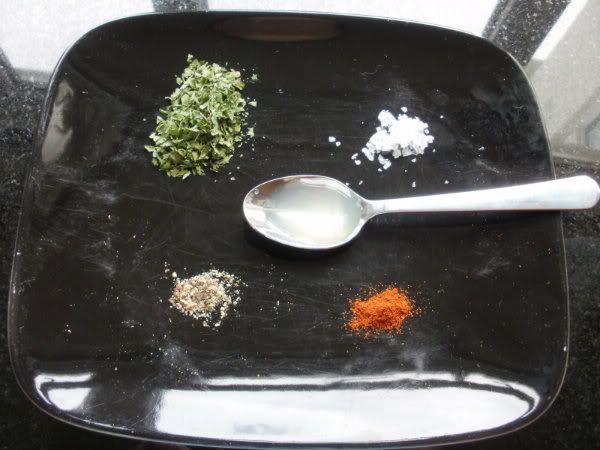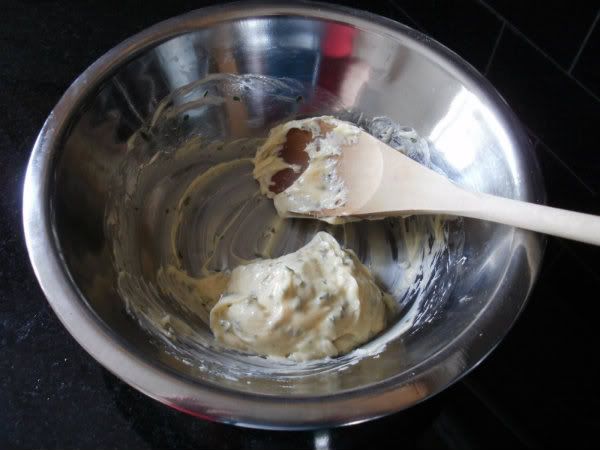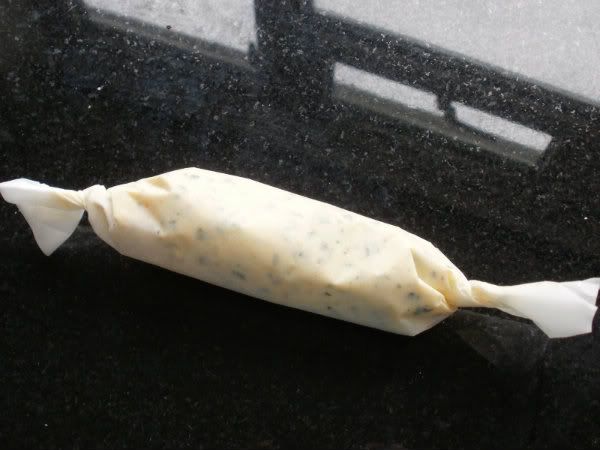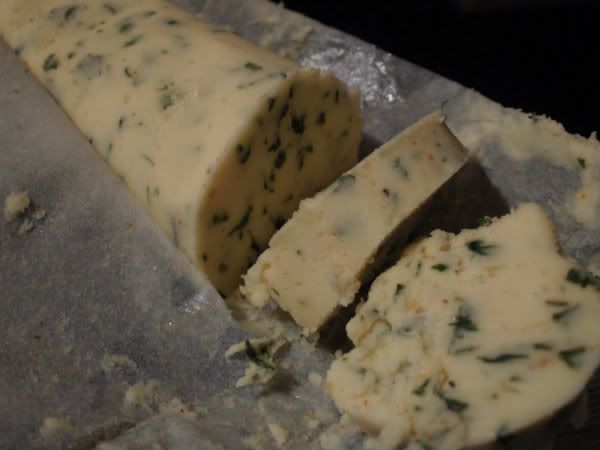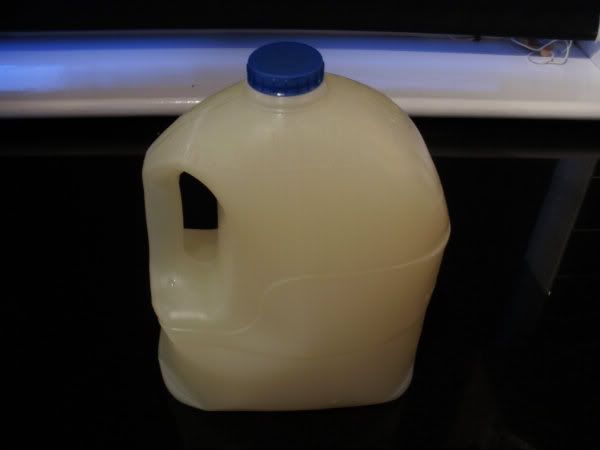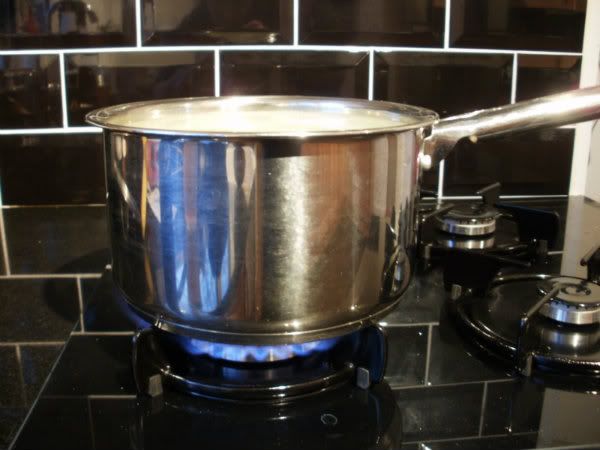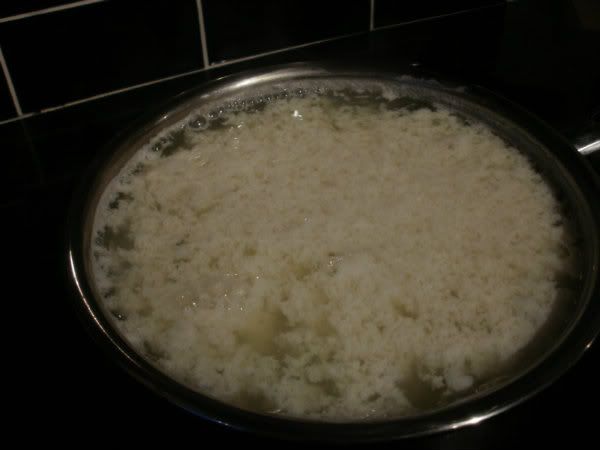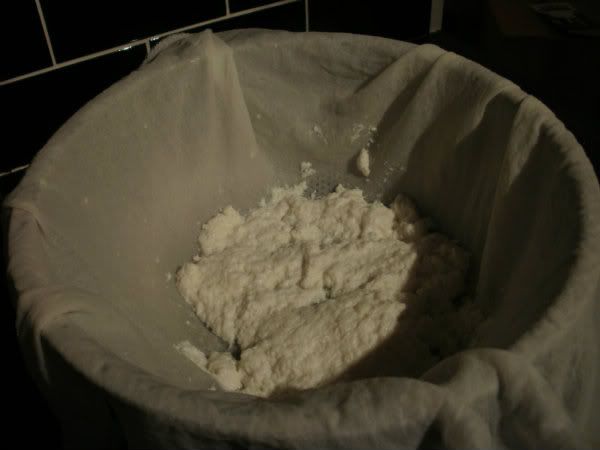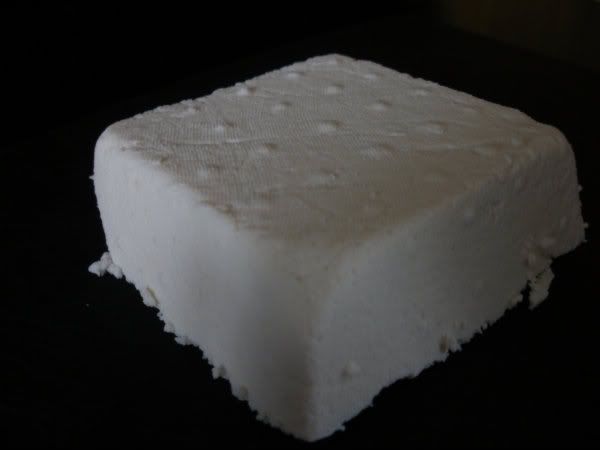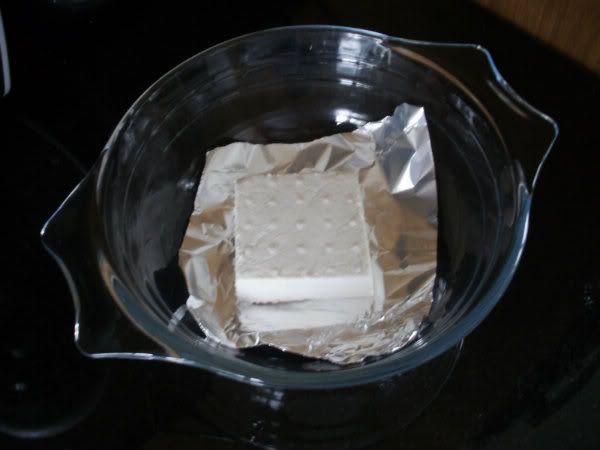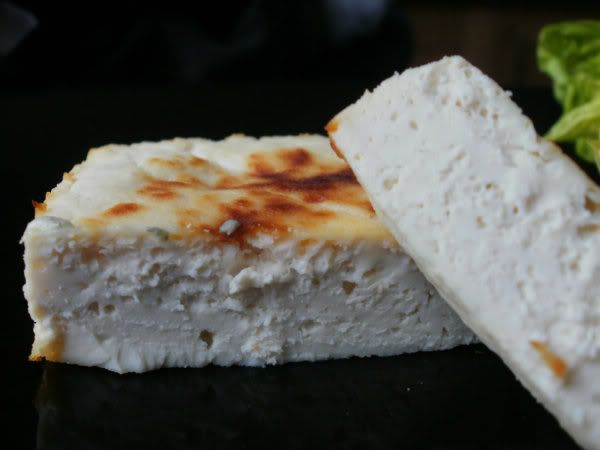I'm not going to lie, making cheddar is pretty hard work. I personally get a sense of self satisfaction at the end of it that makes it worth it but you should be pre-warned that you probably want to wait until you have a couple of days where you can afford to bum around the house and start it in the morning. I decided to make life a bit easier for myself and used some of my brewing kit this time, it certainly took a fair bit of effort out of the whole process.
I used 6 litres of whole fat cows milk at room temperature. Last time I made cheddar I used Jersey cow's milk, which was lovely, but not so convenient to source. After sterilising everything stir in 2 ounces of mesophyllic starter and leave it for about 45 minutes to an hour to sour. Then bring the milk up to 30degC in a water bath. This was where my mash tun came into play, the other way to do this is to hog the kitchen sink for the whole day and have to continually drain out the cold water and top up with hot to maintain the temperature.
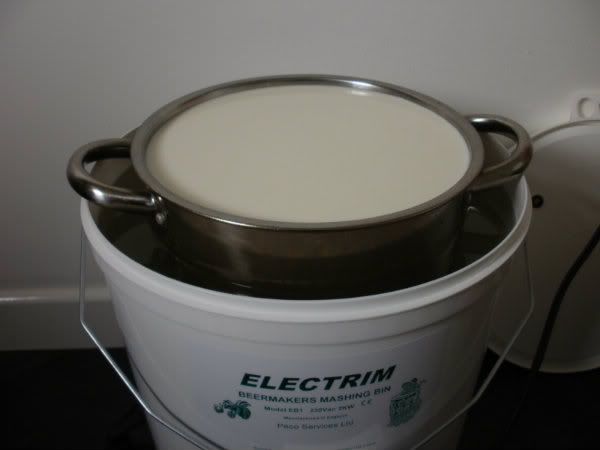
Stir in about 1/4 teaspoon of mesophillic starter diluted in 2 teaspoons of water into the milk using a ladle. Rennet sinks so to evenly distribute it you need to stir in an up and down kinda motion.
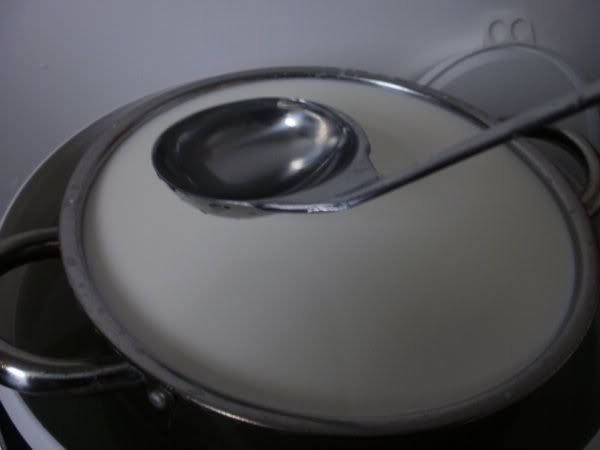
After about an hour check on the milk. You're looking for what’s called the clean break - the point where the thermometer cuts through the milk rather than just submerging into it. It becomes a bit like a thin set jelly. At this point cut the curds into 1/4 inch cubes. This means cutting cross ways, lengthways, and then the same again but with the knife at a diagonal to cut across. For smaller cubes that you would cut for harder cheeses such as parmesan you can get away with using a balloon whisk, twisting the whisk as you lift it up and down in the milk.
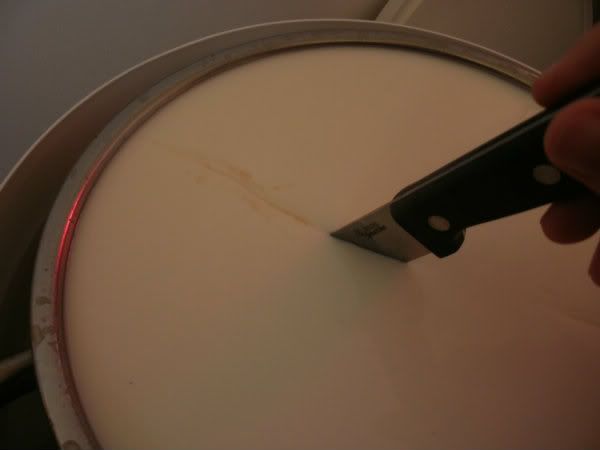
Very soon, after about 5 minutes, the whey will drain from the curds and you'll see the curds floating in the whey. These need gentle stirring occasionally to prevent the curds from re-matting.

Over the next 30 minutes the temperature needs to be slowly brought up to 40degC, then maintained at this temperature for another 30 minutes. Remember to tend to your curds and stir them during this time. After this hour you can leave them at 40degC for 20 minutes before gently ladling into a colander lined with cheese cloth. I retain the whey at this point and make ricotta. The colander is then placed back in the pot and left to set for about 20 minutes.
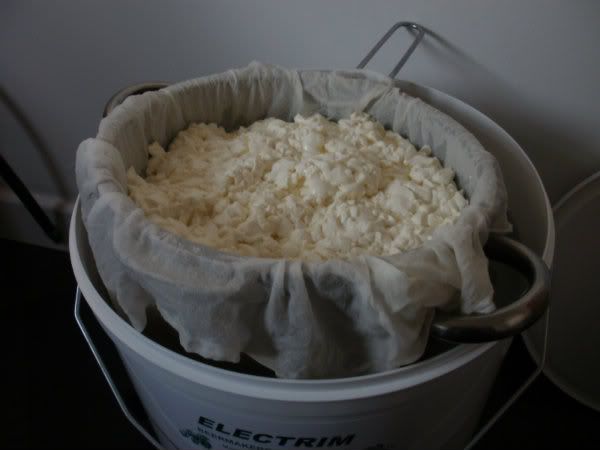
When you turn it out onto a cutting board you'll have this sort of cake.
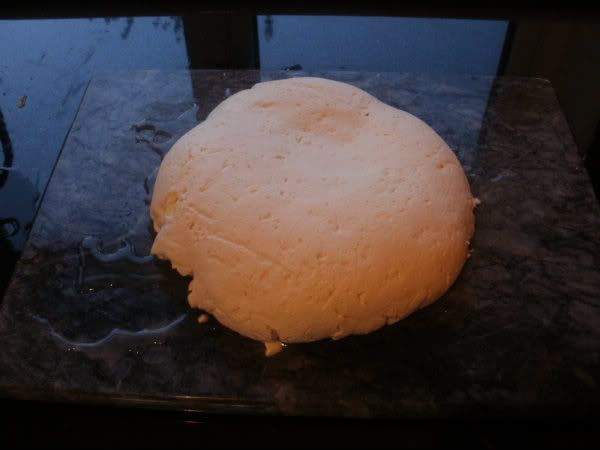
Then, using a sharp knife as the cake is very delicate, cut the cake in half and then across in about 2 inch slices. These then go back into the pot which is still being kept at a constant temperature of 40degF, the process is called cooking the curds. Every 15 minutes they need turning and the excess whey pouring out. Do this for 2 hours.
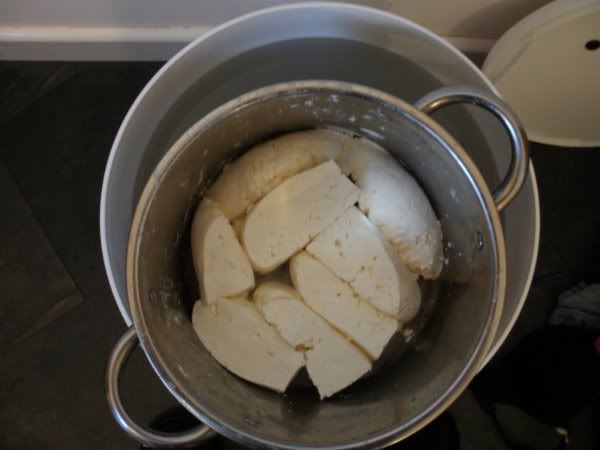
At the end of this the curds will feel a bit like cooked chicken breast. Break them up into about 1/2 inch cubes and cook for a further half an hour, stirring every 10 minutes with your fingers.
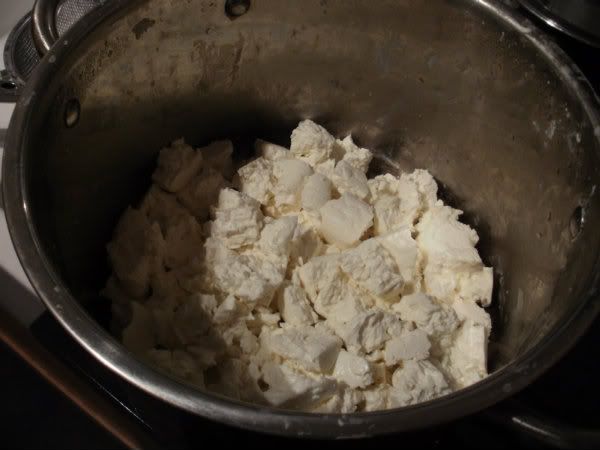
Now add 1 tablespoon of kosher salt and stir it in with your fingers. I just use good quality sea salt. Cram as many curds as you can into moulds lined with cheese cloths and it’s time to take them to be pressed. This is quite a milestone in the whole process, most of the hard work is done now and you can clean your equipment up.
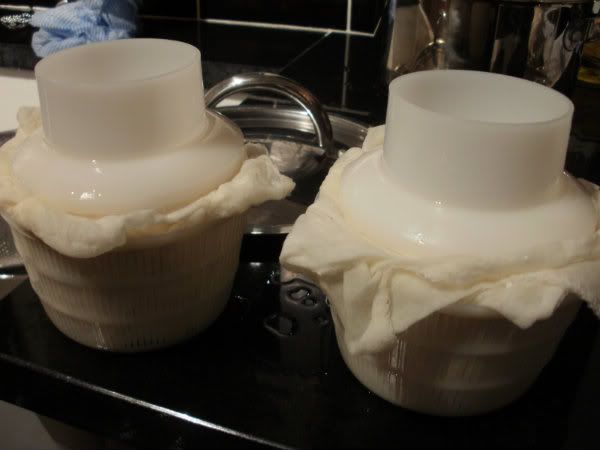
Again my brewing kit made this so much easier. If you've read my post on making halloumi you'll have seen my Dutch style cheese press in action. It's a clumsy piece of kit and so I decided I needed to develop a safer method using my brewing bins. The cheese is in the bottom bin, the top bin sits inside the bottom bin and on top of the cheese. Then I just need to fill it with the volume of water required to press down with the desired force. Much safer!
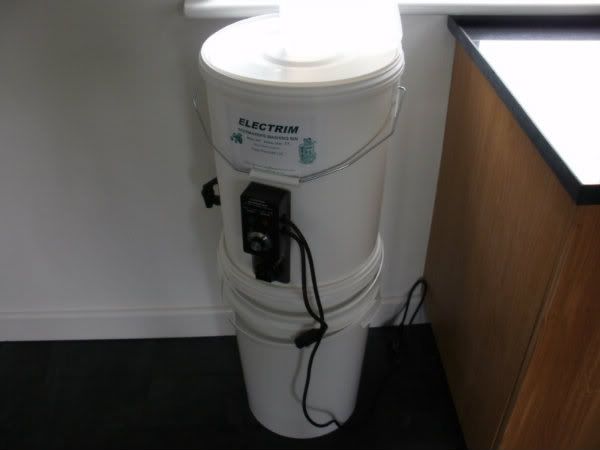
The cheese is pressed at 4.5 kg (10lbs) of pressure for 15 minutes, then remove from the mould, re-bandage and press at 18kg (40lbs) for 12 hours. Finally remove it again, re-bandage and press one last time at 22.5kg (50lbs) for 24 hours. Finally, you have what resembles a cheese.
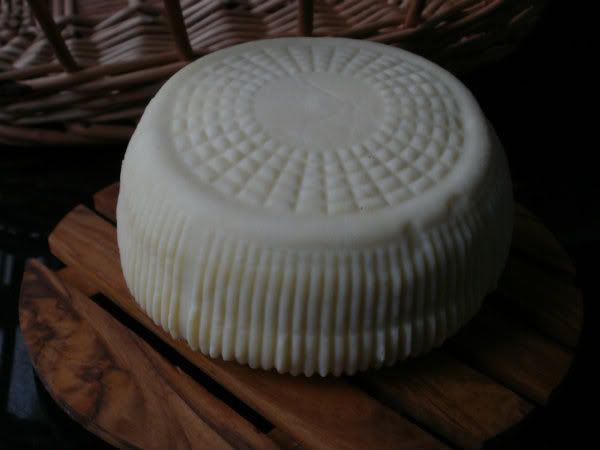
This now needs to be air dried, which is probably the most tense time in the whole process for me. The cheese needs turning regularly and drying evenly and thoroughly. I turn it whenever I walk past it or remember to, and keep them on a board, up high somewhere, covered loosely with some cloth. This can take a few days, but given that you've gone to so much effort to keep everything sterile up to now it's worrying to think that your hours of work are sitting exposed on a shelf in your kitchen. Once dried (as in dry to the touch on the outside) you can move onto waxing the cheese. Melt the wax in a bowl over some boiling water, brush the cheese all over in vinegar to kill off anything it may have picked up whilst drying and dip it in the wax to coat it.

I like to give it a good thick coat of wax and make sure it's well protected. It's now ready to be aged.
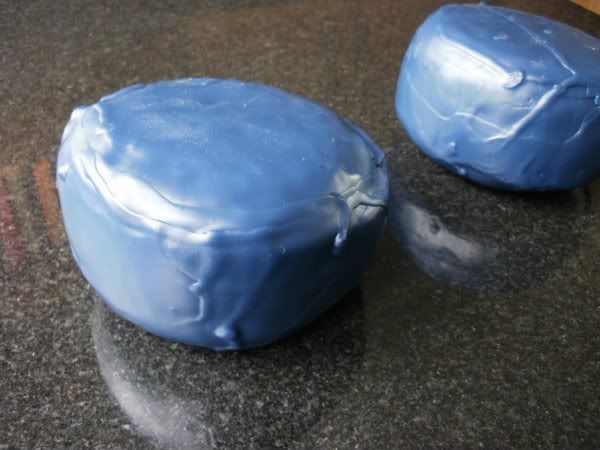
I like mature cheddar so I'll be leaving these 2 for about a year before coming back to them. For the first couple of weeks I'll monitor them closely and turn them daily, just to check that the waxing went OK and no nasty infection might have crept in there. It'll be well worth it in a year when I get to try them!
